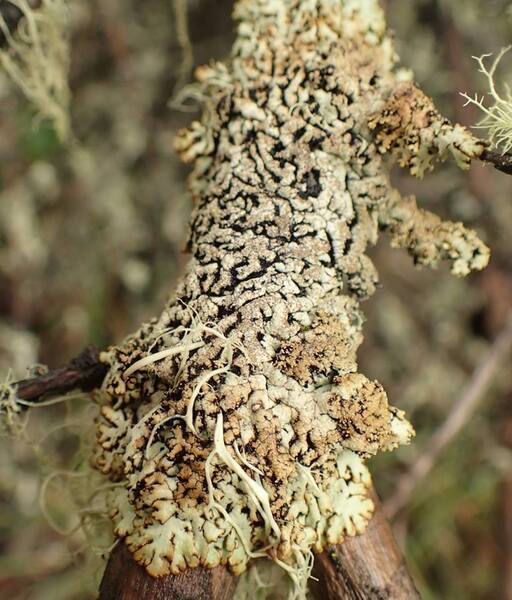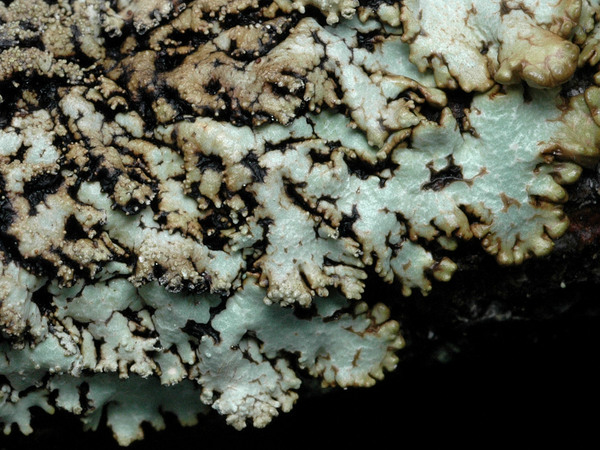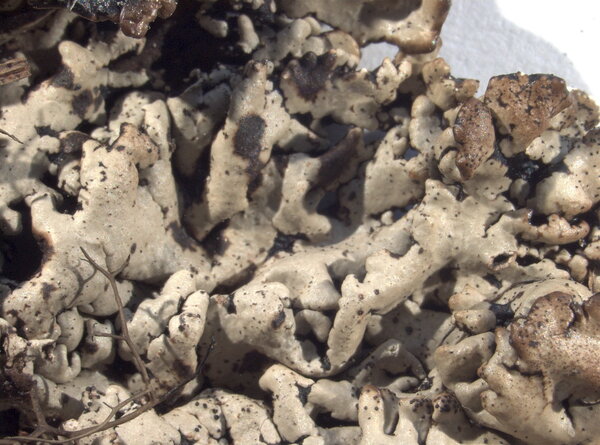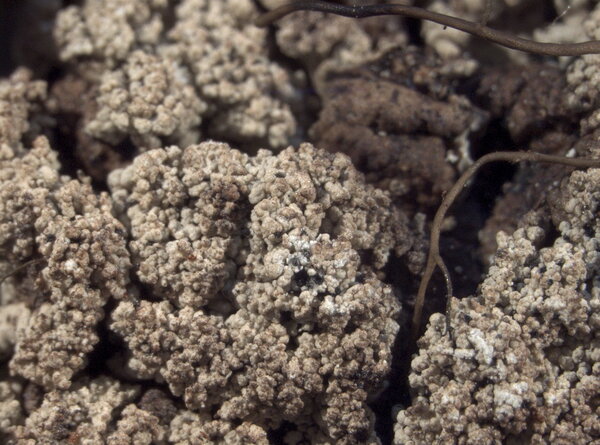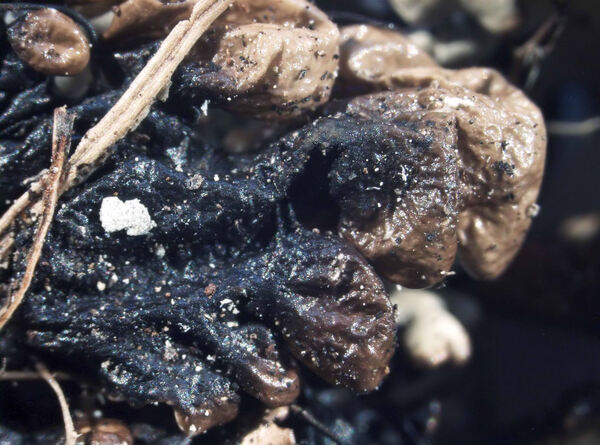Hypogymnia austerodes (Nyl.) Räsänen
Ann. Bot. Soc. Zool.-Bot. Fenn. Vanamo, 18, 1: 13, 1943. Basionym: Parmelia austerodes Nyl. - Flora, 64: 537, 1881.
Synonyms: Parmelia farinacea var. obscurascens Bitter; Parmelia obscurata Bitter non auct.; Parmelia obscurata var. isidiata (Lynge) H. Magn.
Distribution: N - Ven (Nascimbene & Caniglia 2000b, 2002c, 2003c, Nascimbene & al. 2006e, Nascimbene 2011), TAA (Nascimbene & Caniglia 2000b, 2002c, Nascimbene & al. 2005, 2006, 2006e, 2007b, 2009, 2010, 2014, 2022, Nascimbene 2006b, 2008b, 2014, Nimis & al. 2015), Lomb (Nascimbene & al. 2006e), Piem (Matteucci & al. 2013), VA (Matteucci & al. 2008).
Description: Thallus foliose, heteromerous, dorsiventral, adpressed, forming more or less regular, up to 5(-8) cm wide rosettes, the lobes contiguous, (0.5-)1-2(-3) mm wide, clearly swollen especially at the tips. Upper surface greenish grey to brown in peripheral parts, often mottled black, somehow glossy, with laminal, diffuse soredia developing from subisidiose, pustulate papillae. Lower surface black, brownish near the margins and at apex, glossy, erhizinate. Upper cortex of tightly packed, more or less anticlinally oriented hyphae, the cell walls with Cetraria-type lichenan; medulla soon becoming hollow, lining the cavity inside the lobes, the ceiling of the cavity white, the floor pale to dark grey; lower cortex dark, paraplectenchymatous. Apothecia extremely rare, lecanorine, sessile, to 6 mm across, with a brown disc and a thin thalline margin. Epithecium brown; hymenium and hypothecium colourless; paraphyses coherent, simple or sparingly branched in upper part. Asci 8-spored, clavate, Lecanora-type. Ascospores 1-celled, hyaline, broadly ellipsoid, 6.5-7.5 x 4.5-5 µm. Photobiont chlorococcoid. Spot tests: upper cortex K+ yellow, C-, KC-, P- or P+ pale yellow, UV-; medulla K-, C-, KC+ orange-red, P-, UV+ pale blue-violet. Chemistry: upper cortex with atranorin and chloroatranorin; medulla with physodic acid (major), 3-hydroxyphysodic acid (accessory), 2'-O-methylphysodic acid (accessory), plus an unknown substance.Note: a mainly boreal-montane, circumpolar species found on acid bark, especially of conifers, and on lignum, occasionally on siliceous rocks, perhaps restricted to the climatically most continental parts of the Alps, with optimum near treeline. The record from the deciduous belt of Basilicata, by Potenza & Fascetti (2005), being dubious, is not accepted here.
Growth form: Foliose, narrow lobed
Substrata: rocks, bark, and lignum
Photobiont: green algae other than Trentepohlia
Reproductive strategy: mainly asexual, by soredia, or soredia-like structures (e.g. blastidia)
Commonnes-rarity: (info)
Alpine belt: absent
Subalpine belt: rare
Oromediterranean belt: absent
Montane belt: very rare
Submediterranean belt: absent
Padanian area: absent
Humid submediterranean belt: absent
Humid mediterranean belt: absent
Dry mediterranean belt: absent
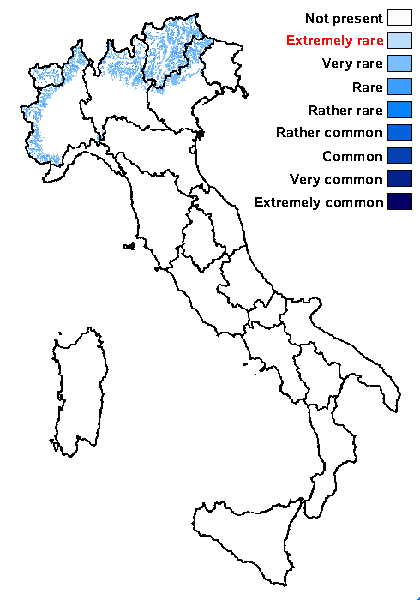
Predictive model
Herbarium samples
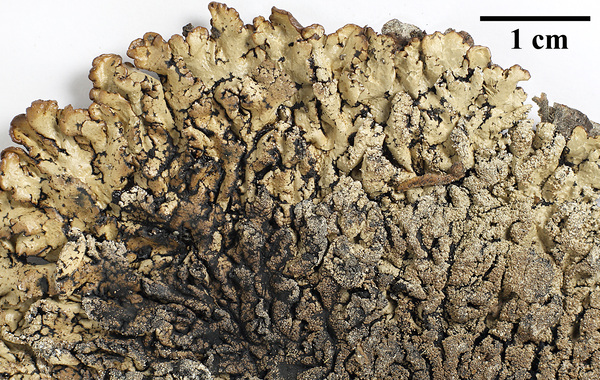

Felix Schumm - CC BY-SA 4.0
[2642], Schweiz, Nationalpark, zwischen Zernez und Ova Spin, ca. 1800 m, auf Pinus im Pinus-Erica-Wald, zusammen mit Usneen, Letharia vulpina etc. (Bodenpflanzen: Polygala chamaebuxus, Daphne striata). Leg. Schumm 04.07.1978, det. Schumm 1978.
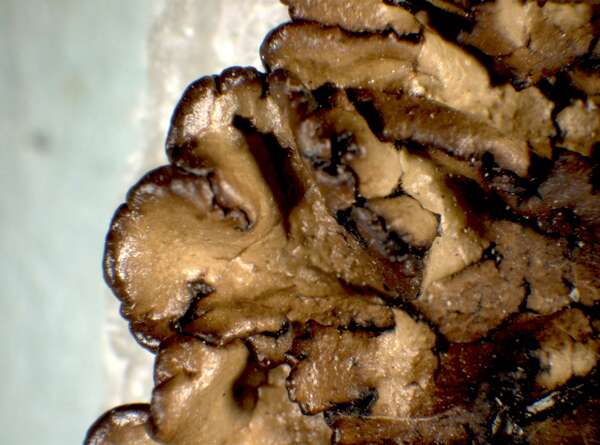

P.L. Nimis; Owner: Department of Life Sciences, University of Trieste
Herbarium: TSB (2566)
2001/12/12
tip of lobes
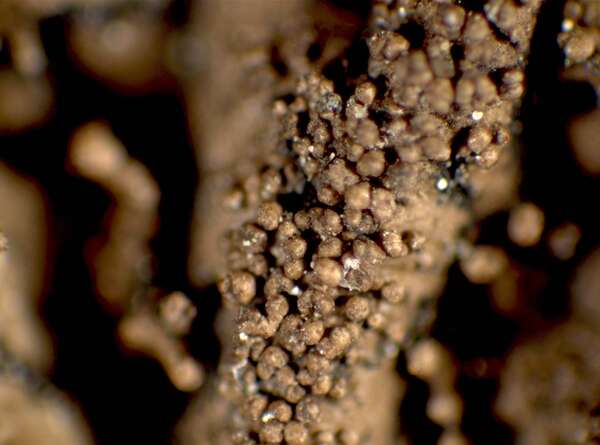

P.L. Nimis; Owner: Department of Life Sciences, University of Trieste
Herbarium: TSB (2566)
2001/12/12
isidia


P.L. Nimis; Owner: Department of Life Sciences, University of Trieste
Herbarium: TSB (2566)
2001/12/12
old isidia becoming sorediose
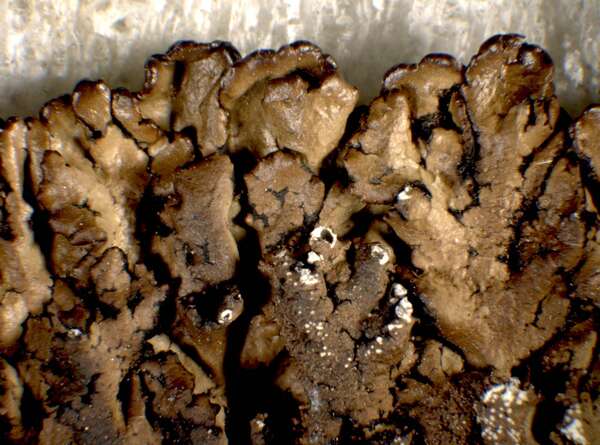

P.L. Nimis; Owner: Department of Life Sciences, University of Trieste
Herbarium: TSB (2566)
2001/12/12
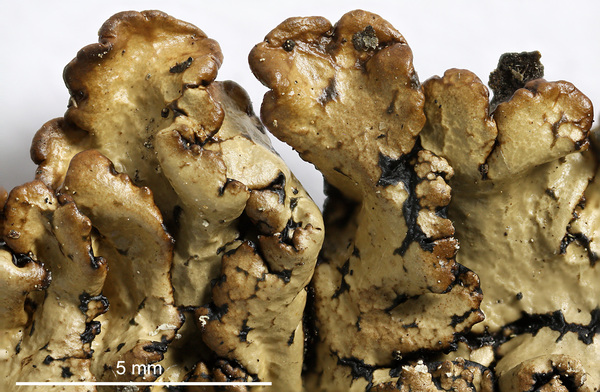

Felix Schumm - CC BY-SA 4.0
[2642], Schweiz, Nationalpark, zwischen Zernez und Ova Spin, ca. 1800 m, auf Pinus im Pinus-Erica-Wald, zusammen mit Usneen, Letharia vulpina etc. (Bodenpflanzen: Polygala chamaebuxus, Daphne striata). Leg. Schumm 04.07.1978, det. Schumm 1978.
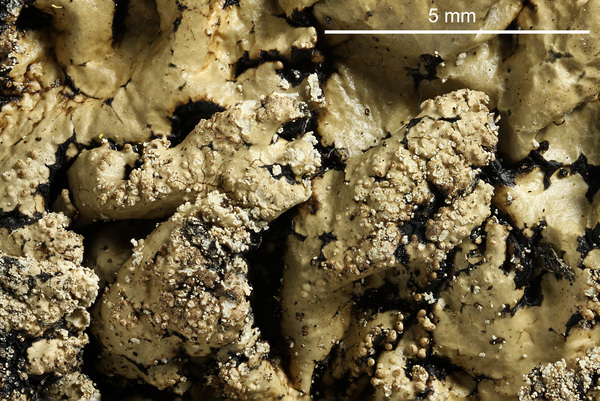

Felix Schumm - CC BY-SA 4.0
[2642], Schweiz, Nationalpark, zwischen Zernez und Ova Spin, ca. 1800 m, auf Pinus im Pinus-Erica-Wald, zusammen mit Usneen, Letharia vulpina etc. (Bodenpflanzen: Polygala chamaebuxus, Daphne striata). Leg. Schumm 04.07.1978, det. Schumm 1978.


Felix Schumm - CC BY-SA 4.0
[2642], Schweiz, Nationalpark, zwischen Zernez und Ova Spin, ca. 1800 m, auf Pinus im Pinus-Erica-Wald, zusammen mit Usneen, Letharia vulpina etc. (Bodenpflanzen: Polygala chamaebuxus, Daphne striata). Leg. Schumm 04.07.1978, det. Schumm 1978.
Growth form: Foliose, narrow lobed
Substrata: rocks, bark, and lignum
Photobiont: green algae other than Trentepohlia
Reproductive strategy: mainly asexual, by soredia, or soredia-like structures (e.g. blastidia)
Commonnes-rarity: (info)
Alpine belt: absent
Subalpine belt: rare
Oromediterranean belt: absent
Montane belt: very rare
Submediterranean belt: absent
Padanian area: absent
Humid submediterranean belt: absent
Humid mediterranean belt: absent
Dry mediterranean belt: absent

Predictive model
| Herbarium samples |


Felix Schumm - CC BY-SA 4.0
[2642], Schweiz, Nationalpark, zwischen Zernez und Ova Spin, ca. 1800 m, auf Pinus im Pinus-Erica-Wald, zusammen mit Usneen, Letharia vulpina etc. (Bodenpflanzen: Polygala chamaebuxus, Daphne striata). Leg. Schumm 04.07.1978, det. Schumm 1978.


P.L. Nimis; Owner: Department of Life Sciences, University of Trieste
Herbarium: TSB (2566)
2001/12/12
tip of lobes


P.L. Nimis; Owner: Department of Life Sciences, University of Trieste
Herbarium: TSB (2566)
2001/12/12
isidia


P.L. Nimis; Owner: Department of Life Sciences, University of Trieste
Herbarium: TSB (2566)
2001/12/12
old isidia becoming sorediose


P.L. Nimis; Owner: Department of Life Sciences, University of Trieste
Herbarium: TSB (2566)
2001/12/12


Felix Schumm - CC BY-SA 4.0
[2642], Schweiz, Nationalpark, zwischen Zernez und Ova Spin, ca. 1800 m, auf Pinus im Pinus-Erica-Wald, zusammen mit Usneen, Letharia vulpina etc. (Bodenpflanzen: Polygala chamaebuxus, Daphne striata). Leg. Schumm 04.07.1978, det. Schumm 1978.


Felix Schumm - CC BY-SA 4.0
[2642], Schweiz, Nationalpark, zwischen Zernez und Ova Spin, ca. 1800 m, auf Pinus im Pinus-Erica-Wald, zusammen mit Usneen, Letharia vulpina etc. (Bodenpflanzen: Polygala chamaebuxus, Daphne striata). Leg. Schumm 04.07.1978, det. Schumm 1978.


 INDEX FUNGORUM
INDEX FUNGORUM
 GBIF
GBIF
 DOLICHENS
DOLICHENS


